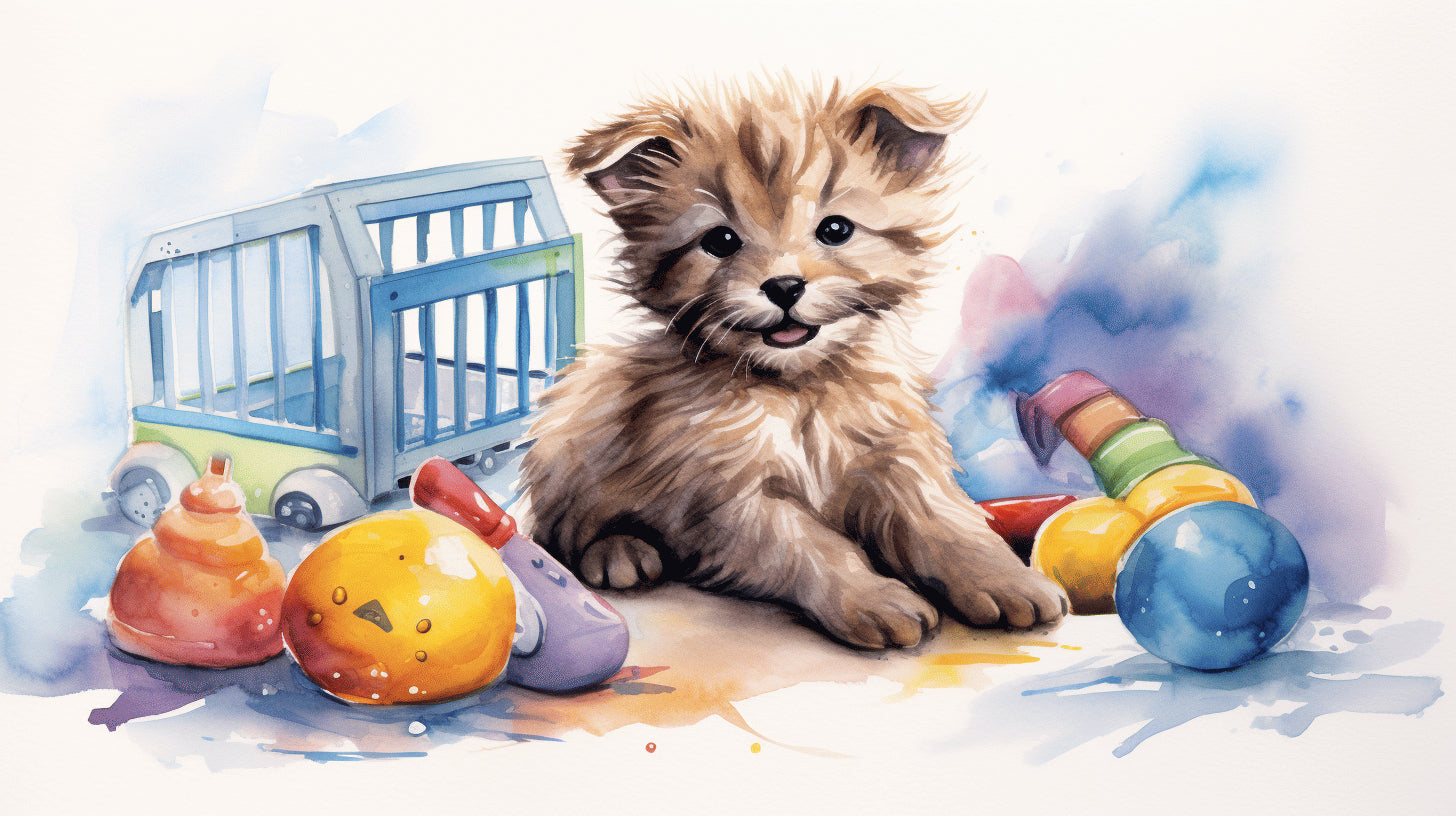Welcoming a pet into your home is the beginning of an exciting journey of companionship, care, love, excitements, and sometimes challenges. Yet, beyond the cute faces and endless cuddles, every pet comes with considerable responsibilities. This guide, "Pet Safety 101", aims to be your go-to resource if you've just invited a new furry friend into your home or if you're a seasoned pet parent seeking more knowledge about pet safety.
We'll traverse various aspects of pet safety, from understanding the alarming shelters statistics to the importance of pet insurance and medical attention trends. We will delve into safety measures to take while travelling with your pets in vehicles, essential safety precautions at home, and ways to maintain a healthy, happy pet. With the provided information, we aim to expand your understanding of pet safety, ensuring that your pet can thrive happily and healthily under your care. Let's set the stage for a lifetime of well-being for our beloved animal companions.
Pets and Shelters Statistics
Pets provide an immeasurable source of joy and companionship for their human families. But as heartwarming as this bond is, it's essential to look at the other side of the coin: pet homelessness. In this section, we will delve into the stats and facts surrounding animals entering U.S. shelters, their chances of finding a forever home, and the heartbreaking reality that some of them face.
Number of Companion Animals Entering Shelters
Based on the data available, we're looking at quite a startling number here. Seeing it in black and white makes one realize the depth of the issue, as a whopping 6.3 million companion animals enter U.S. shelters every year. Yes, you read that right - 6.3 million. This figure encompasses various kinds of pets, from cats and dogs to ferrets and rabbits.
Pets Entering Shelters Annually
Now that we've established the overall number of companion animals entering shelters, let's break it down for a typical year. On average, the annual influx of new residents in U.S. shelters rings in around the same figure of 6.3 million. That equates to almost 17,260 pets every single day who find themselves in a shelter, often through no fault of their own. It's a figure that underscores the gravity of the pet overpopulation problem and an urgent call to action for all of us who care about animals.
Percentage of Pets Saved
In the face of such daunting numbers, there's good news worth celebrating. Following the trend in recent years, an impressive 81% of cats and dogs who entered U.S. shelters in 2022 found safe and loving homes. This is no small feat and testament to the committed work from rescue staff, volunteers, and all those who choose to adopt and not shop when bringing a new pet into their homes.
But even amidst this ray of hope, there's still a way to go. The same set of stats indicates that around 378,000 cats and dogs died unnecessarily in shelters. These numbers, although heartbreaking, serve a crucial purpose: They remind us that the battle for animal welfare is still needing our full commitment.
By shining a spotlight on these shelter statistics in this section, our hope is that it serves as a timely reminder of the ongoing struggles that pets in shelters face. It's up to each of us, in our own way, to be a voice and force for change.
Pet Safety in Vehicles
Ensuring the safety of our pets is crucial to every animal lover. Given how often they share our homes, recreational spaces, and cars, it's critical we take measures to protect them wherever they are. "Pet Safety in Vehicles" is a topic that every pet owner should not only read about but also diligently practice. It's crucial to be aware of both the risks associated with driving with your pets and the statistics that emphasize the importance of animal carriers.
Risks of Driving with Pets
Many pet owners enjoy the companionship of their fur babies during car rides. In fact, a study found that nearly 56% of people drive with their dogs at least once a month. However, driving with pets can pose several risks, both to the pets and their owners. Unrestrained pets tend to distract drivers and an abrupt brake could send the pet hurtling, risking serious injury. Moreover, pets may also panic, act out, or become aggressive due to stress or fear, which further increases the risk of accidents.
Deaths of Dogs in Pickup Trucks
The danger gets significantly worse when it comes to dogs traveling in pickup trucks. Regrettably, over 100,000 dogs are killed each year from riding in pickup truck beds. These open-air rides may seem fun and freeing at first glance, but they're actually fraught with danger. A dog might be tempted to jump out, be accidentally thrown out due to a sudden stop, or even get hit by flying debris. This harrowing statistic underscores the importance of safe transportation for pets.
Importance of Animal Carriers
To safeguard our furry friends while driving, using an animal carrier is the most reliable solution. In 2021, transporters reported seven animal deaths and 14 animal injuries. These tragic cases could have been prevented with the use of a suitable carrier or cargo pet barrier. The protective structure of carriers shields pets from impacts, mitigates the danger of distractions, and prevents pets from attempting to escape or being thrown out of the vehicle.
Our pets, just like our loved ones, deserve to be transported safely. It's up to us, as responsible pet owners, to be aware of the risks and take measures to ensure our pets' safety during car rides. The use of proper animal carriers not only provides physical protection but also gives them a sense of security, making the journey enjoyable for everyone on board.
Pet Insurance and Medical Attention Trends
Pet insurance has become increasingly commonplace, with 4.8 million pets insured in the U.S. alone as of the conclusion of 2022 - a statistic that speaks to a surging awareness among pet parents about its value. As we delve into the trends shaping this industry, we’ll also shine a light on a somewhat chilling fact: over 800,000 people need medical attention for dog bites annually - a sobering reminder of the potential medical contingencies in the world of pet ownership.
Pet Insurance Trends
In recent years, pet insurance has shed its status as a luxury commodity, becoming a firm fixture in many a pet owner's lives. This shifting perception is reflected in the rising number of policies, a trend fuelled by a greater collective commitment towards ensuring our furry, finned, or feathered friends' wellbeing with financial security.
Let's distill the key catalysts behind this escalating growth using bullet points:
- Rising veterinary costs: Advancements in treatments and technologies mean better care for pets, but also skyrocketing costs. Pet insurance can help mitigate these expenses.
- Humanization of pets: Today, an increasing number of pet parents view their pets as family members, making their health and well-being a priority.
- Greater Awareness: More and more people are learning about the benefits of pet insurance and the coverage options available.
By understanding these trends, pet parents can make more informed decisions about their pet's healthcare and insurance plans.
Dog Bite Incidents
While it is endearing to think of our canine companions as always gentle and friendly, one mustn't overlook the fact that over 800,000 individuals need medical attention for dog bites on an annual basis. Dog bite incidents are a stark reminder of the medical uncertainties that may arise in the journey of pet ownership, though not a reason to panic.
In the event of an unfortunate incident, pet insurance can prove invaluable by covering medical costs, helping pet owners navigate difficult situations with financial confidence. Furthermore, many insurance plans also include liability coverage, providing added reassurance.
Unpredictable as pet-related medical situations can be, it's comforting for pet owners to know that they have an ally in pet insurance. This growth in pet insurance enrolment and the ongoing necessity for medical attention due to dog bites underline the importance of a solid safety net for our animal companions. Pet owners can feel secure knowing they have the means to provide their pets the best medical care when needed.
Basic Pet Safety Precautions
Nothing quite compares to the joy and affection that pets bring into our lives. However, as a responsible pet parent, it's crucial to take the right steps in ensuring their safety. This comprises actions ranging from equipping them with proper identification to preparing for emergencies and safeguarding them in changing seasons. These actions can not only prolong the life of your furry friend but also contribute significantly to their happiness, wellbeing, and longevity.
Pet Identification
One of the most significant safety measures you can take for your pet is ensuring they are properly identified. Whether it's a collar, a tag, or a microchip, proper identification is a lifesaver. This precaution is critical due to an alarming statistic: approximately 11-16% of dogs and 12-18% of cats go missing at least once in five years. Concrete measures such as these can speed up the process of reuniting with your pet if they ever get lost.
In fact, the American Veterinary Medical Association (AVMA) recommends all pets to wear collars with proper identification and also be microchipped. This basic precaution significantly increases the chances of a lost pet being returned safely.
Preparing for Emergencies
Emergencies can occur at any time, but the degree of their impact can be mitigated with sufficient preparation. A good starting point is assembling a pet emergency kit with essentials such as food, water, medicines, and essential documents.
Also, if your pet travels with you, remember to secure them in a well-ventilated carrier throughout the journey. Safety during travel is of the utmost importance to prevent any unforeseen incidents or harm coming to your pet.
Safety Precautions During Holidays and Seasons
As the seasons change, so do the potential hazards for your pets. During summer, for instance, be proactive in preventing heat stroke and dehydration. This can be achieved by providing sufficient shade and water for your pet at all times.
During holiday festivity times, bewares of potential hazards like open flames (candles), electrical cords, and certain festive foods that could be toxic to your pet.
Preventing Common Hazards
Time spent at home can also present numerous hazards to your pet. Household items like cords, candles, and some plants can pose a risk, warranting constant vigilance. Ensuring that these items are out of the reach of your pets or thoroughly pet-proofing your home can go a long way in maintaining their safety.
Additionally, you need to actively deter theft which has sadly become common these days. There are some effective Tips to Protect Your Dog that can fortify your defense against potential thieves.
While the task of ensuring pet safety may seem daunting initially, remember that it's all part of the incredibly fulfilling journey of pet parenthood. By following these basic guidelines, you're effectively paving the way for a safer, happier life for your fuzzy companions.
Maintaining Pet Health
Keeping a pet isn't just about adorable faces and fun playtimes. A pet is a lifelong commitment, and that commitment includes ensuring optimal health for our furry friends. The road to pet wellness is paved with consistent and effective care, elements of which include regular exercise and training, veterinary care, and precaution against leaving pets in parked cars.
Importance of Exercise and Training
Whether your four-legged friend is a tiny hamster or an extra-large breed of dog, exercise and proper training play a significant role in their overall wellbeing. It's not just about expelling energy and enjoying the great outdoors; regular exercise can help:
- Maintain a healthy weight, reducing the risk of diseases such as diabetes and arthritis
- Improve mental wellbeing, reducing anxiety and destructive behaviors
- Enhance motor skills and coordination
Moreover, skimping on pet training can have serious implications for their safety. Key elements like keeping dogs on leashes during walks and teaching children the right way to interact with pets can go a long way in avoiding dangerous situations.
Veterinary Care
Often, pet owners underestimate the value of regular veterinary care in maintaining their pet’s overall health. A trip to the vet is not just about annual vaccinations. Comprehensive exams can help catch early signs of serious medical issues like kidney disease, dental problems, and even cancer, enabling timely treatment for your pet. Remember that pets are masters at hiding pain, so regular check-ups are a must to ensure their wellbeing.
Avoidance of Leaving Pets in Parked Cars
It's a common misconception that cracking a window open keeps the inside of a parked car cool. However, reality paints a chillingly different picture. Even on a seemingly mild day, the temperature inside a parked car can soar incredibly high within a matter of minutes. This can lead to tragedies, as pets, particularly dogs, are vulnerable to heat stroke and could face severe consequences if left unattended in a hot car. Pet safety should always be a priority–let's be proactive in ensuring they are never left to face such a dangerous predicament.
Looking after a pet involves more than just feeding them properly and providing them with love and attention. We must also ensure their safety and wellbeing on all fronts—exercise and training, veterinary care, and the avoidance of dangerous situations, like leaving them in parked cars. Caring for a pet is a rewarding journey, and by integrating these aspects into our pet care routine, we can pave the path for a happier and healthier life for our furry friends.
Conclusion
Taking care of our furry friends not only involves a loving heart but also requires informed decisions backed up with actionable wisdom. And our commitment must be reflective of their unconditional loyalty and love. Understanding pet behavior, their needs, and putting essential safety measures in place shields them from avoidable harm. Being proactive about your pets' health, exercise, and feeding regimen are vital elements that safeguard their general well-being.
Moreover, it's always prudent to anticipate emergencies and have contingency plans in place. From preparing an emergency first-aid kit to understanding your pet's medical history, these gestures denote responsible and caring pet ownership.
As we close this enriching discussion on pet safety, it's worth noting that there are innovative products designed to enhance the safety and comfort of our pets. From innovative leashes, calming toys, trackers, and even cozy carriers, technology has become a dear friend in making our pets' lives safer and happier.
One such brand committed to championing the well-being of pets with their diverse range of offerings is Empowered by Ashley. Their product line is not just another pet accessory addition, but an embodiment of an empowered lifestyle for both the pet and the owner. Aligning with this brand is an assertive step towards promoting safety and enjoying peace of mind, knowing that you're providing the best for your pet.
Promoting pet safety pens down to one simple phrase - love whenever possible. And it's always possible to show love to our pets. Protect them. Nurture them. And above all, cherish them!
Frequently Asked Questions
-
What are some essential pet safety tips?
Here are some essential pet safety tips: 1. Keep toxic substances out of reach, 2. Secure your home and yard, 3. Practice proper leash and collar usage, 4. Provide regular vet check-ups, and 5. Keep emergency contacts handy.
-
What are common household items that can be toxic to pets?
Some common household items that can be toxic to pets include chocolate, certain houseplants (e.g., lilies), cleaning products, medications, and certain human foods (e.g., grapes, onions, and garlic). It's important to keep these items out of your pet's reach.
-
How can I pet-proof my home and yard?
To pet-proof your home and yard, ensure that all hazardous substances and plants are out of reach, secure electrical cords, cover trash cans, install secure fencing, remove toxic plants, and create a designated pet area with suitable toys and bedding.
-
Why is regular vet check-up important for pet safety?
Regular vet check-ups are crucial for pet safety as they help detect and prevent potential health issues, ensure vaccinations are up to date, monitor weight and overall condition, and provide an opportunity for professional advice on pet care.
-
What should I include in my pet's emergency contacts?
In your pet's emergency contacts, include the contact information of your regular veterinarian, a 24/7 emergency veterinary clinic, a trusted pet sitter or boarding facility, and a nearby friend or family member who can assist in case of emergencies.
















Leave a comment
This site is protected by hCaptcha and the hCaptcha Privacy Policy and Terms of Service apply.